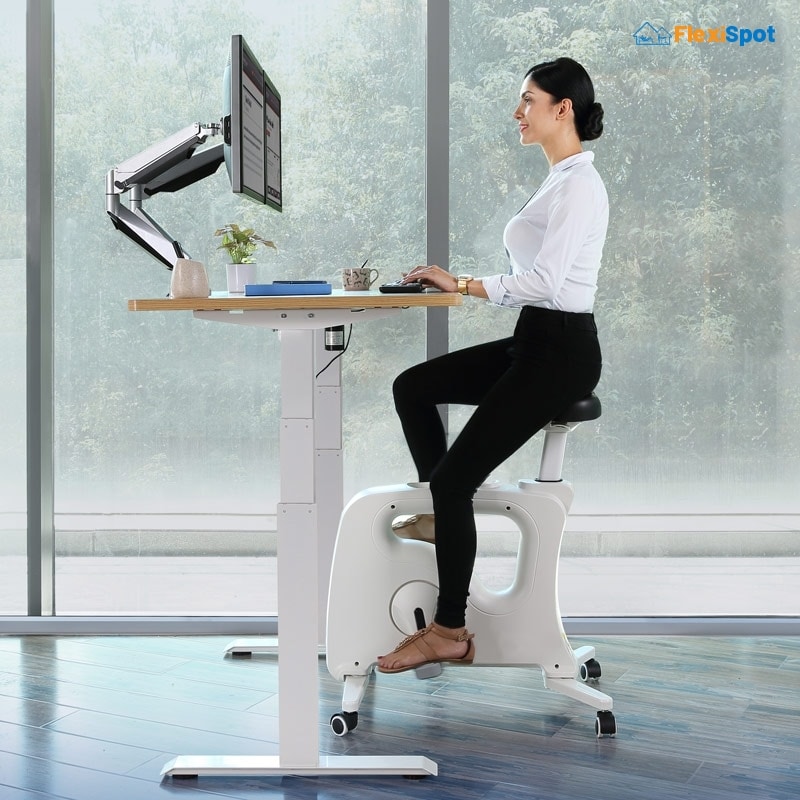When considering possible dangers in the workplace, ergonomics is sometimes disregarded. This is due to the fact that injuries resulting from poor ergonomics aren't quite as visible as injuries caused by falls from great heights or exposure to hazardous substances. Ergonomic injuries, on the other hand, can be just as harmful to the company if the dangers that produce them are not addressed.
The ultimate objective of effective workplace ergonomics is to decrease the likelihood of musculoskeletal disorders (MSDs). Carpal tunnel syndrome, tendinitis, strained muscles, and herniated discs are just a few of the MSDs. MSDs caused by poorly built workstations may result in decreased productivity, lost time, higher insurance claims, lost revenue, and suffering and pain for employees as well as their friends and relatives.
What Is an Ergonomic Program and How Does It Work?
An ergonomics program is a step-by-step process for identifying, preventing, analyzing, and minimizing any risk to employee safety in the workplace. It relates to how ergonomics affects the individual's ability to perform tasks, and how certain tasks, in conjunction with the environment of the workplace, affect the employee's well-being and health.
Employee safety training, modifications in processes to reflect enhanced knowledge of hazards, and implementation of better procedures to avoid recognized risks are generally part of a joint effort between the employees and the employers.
An ergonomics program examines the exact characteristics of the working environment and duties allocated to the employee in order to determine how they may influence the well-being of the employee as well as their job performance.
An ergonomics program could include an assessment of worksite design and duties that may potentially cause injury to your employees, or even an analysis of an injury that's already occurred, the development of precautions to avoid such results in the future, the application of new practices, and employee training on the new procedures.
In order to detect dangers and develop methods to oppose them, such a program must involve direct, succinct communication and collaboration between employers and workers. Repetitive strain injuries fall, accidents, and any other scenarios that may cause an employee injury on the job are examples of such dangers.
Questions to Ask to Determine the Aims of Your Ergo Program in 2022
1. In 2021, what proportion of all the injuries in your organization were sprains and strains? (How do these statistics differ if you had the same statistics from 2020 or 2019?)
2. Determine how many sprain/strain injuries were reported within every department, as well as how many individuals work within every department. To gain a better idea of the injury rate in each area, divide the total of sprain and strain injuries by the number of workers. This should assist you in prioritizing your organization's ergonomics initiatives.
3. Repeat the steps for 1-2 for lost and modified workdays if you have access to the amount of modified and lost workdays. Departments that have a high modified workday frequency should have detailed physical and cognitive demands analyses (PCDAs) to assist the return-to-work efforts, in addition to ergonomics (risk) evaluations. Do you happen to have these?
4. Take a look at how you handle wounded employees. Evaluate if the PCDAs, third-party assessments of appropriateness (demands-abilities assessments), and job coaching are suitable if managers (or the return-to-work coordinators) are having trouble with this procedure. How might you improve the procedure to meet medical constraints and return employees to full responsibilities as quickly as possible?
5. Every company has productivity goals, and most companies can readily identify tasks or departments that are limiting productivity — for example, positions that need a lot of overtime to keep up with demand or procedures that everyone must wait for. Determine the top ten productivity bottlenecks, followed by their fundamental reason. Ergonomics may assist if the problem is related to human performance.
6. Every company, too, has quality requirements. Inquire with your quality manager about the locations and causes of the most serious quality issues. If the problem is caused by human mistakes, ergonomics may assist.
7. Have ten random workers tell you what they should do if they notice an unprotected pinch point. They'll almost certainly advise you to report it. Then, if they come into a job that demands uncomfortable working posture, repeated actions, or a lot of effort, ask individuals what they do (it's possible they'll respond, "Work with it.") Do their replies line up with the ergonomics program's objectives for 2022? What are you expecting them to do?
8. How do your staff feel about their level of comfort? Perhaps you want to be known as the "best pleasant place to work" in your community! Do staff believe they are working as efficiently as possible? Do they believe their job is of the highest quality? To discover out, do an ergo assessment questionnaires of as many workers as possible:
9. What do you think of the conclusion of the week on a scale of 1-10, with 1 being "totally comfortable" and 10 being "severe pain"?
10. On a scale of one to ten, where one is "never," and ten is "often," how frequently do you believe muscle or joint soreness affects your productivity? Do you ever finish early, take additional breaks, or fall short of your deadlines?
11. How frequently do you believe muscle or joint soreness impacts your work quality on a scale of 1-10, with 1 being "never" and 10 being "all the time"? Do you ever make errors, overlook faults during inspections, drop items, or give unsatisfactory customer service?
12. Once an injury danger has been discovered, you most likely have a mechanism in place to assess it and find remedies. How frequently is the control measure for strain/sprain risks "administrative" (worker technique and job rotation) rather than "engineering"? (platform, device). If your company depends significantly on administrative controls, set a goal to explore technical solutions first and utilize administrative controls only as a last resort.
13. How is it financed, implemented, and assessed if an ergonomics upgrade is recommended (e.g., a new tool, a standing desk, or a new form of PPE that would increase employee comfort)? This procedure should be well-defined and well-documented.
14. Is the plan or equipment for a particular initiative or a new line assessed for sprain/strain injury dangers before it will be implemented? Employees and an ergonomist should be involved at this point to save money and time later.
15. How do the Joint Health and Safety Committee representatives detect strain/sprain injury threats when they examine the workplace? Providing the JHSC with tools and training may help them participate in your ergonomics projects.
How to Improve Workplace Ergonomics?
An ergonomic chair that provides support for your body is a good option if you want to improve the ergonomics of your office. The Soutien Ergonomic Office chair is one such office piece of furniture that can improve the overall ergo situation of your workplace. It has 3D lumbar support that offers three height settings and a mild rebound mechanism that wraps around the lower and upper back to support the spine and neck. This provides the ultimate headrest and lumbar support, allowing employees to work comfortably, even while sitting for long periods of time.
The finest sitting experience is provided by the armrests' 4D adjustment and 135° lounge tilt. The armrests' flexibility allows them to bend to the elbow and wrists with ease, resulting in increased comfort. The chair is made of K+R temperature-sensitive fibers and Italian-imported chenille, which allows you to keep cool while working.
In Conclusion
A proper ergonomics assessment can help reduce injuries and accidents in the workplace. It will enhance overall corporate health and productivity when employees are properly taken care of.


